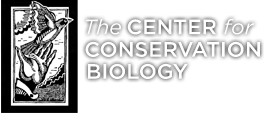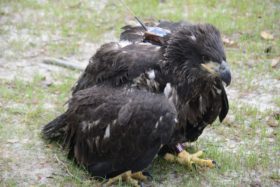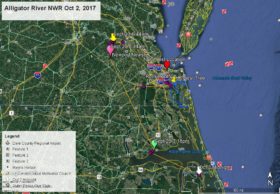Eaglet Weight Gain
March 30 – A Wet Day
March 31, 2011Camellia Still at Lake Joyce
April 1, 2011

The question about how much the eaglets weigh comes up every day, several times each day on the WVEC moderated chat. The answer changes every day because the eaglets gain weight rapidly, but not at the same rate every day. When first hatched the nestlings have a very small capacity for food in their crops and are fed tiny bits of food. Feedings are very short – 5 to 10 minutes. As the chicks gain strength and become larger they can eat more at a time. Feedings take longer and each bite becomes bigger and they gain weight faster. On March 31, 2010, the 3 NBG chicks (all males) were 18 to 21 days old and weighed 1 3/4 to 2 3/4 pounds. By April 22 when NC was fitted with a satellite transmitter the 3 chicks weighed 7 1/4 to 8 pounds. It is an estimate, but the 3 chicks probably weighed about 10 pounds or more when they fledged about 5 weeks later at the end of May. The last three weeks their weight gain slowed because they were much more active and flapping their wings often, thus using and burning energy in preparation for leaving the nest.




2 Comments
wondering if a net could be put some where on the tree to catch babies so they wouldnt have to die
Do you have an idea when they plan to band and weigh this years eaglets?
Response – We are trying now to get our calendars in agreement on the date. Will not be before April 14.